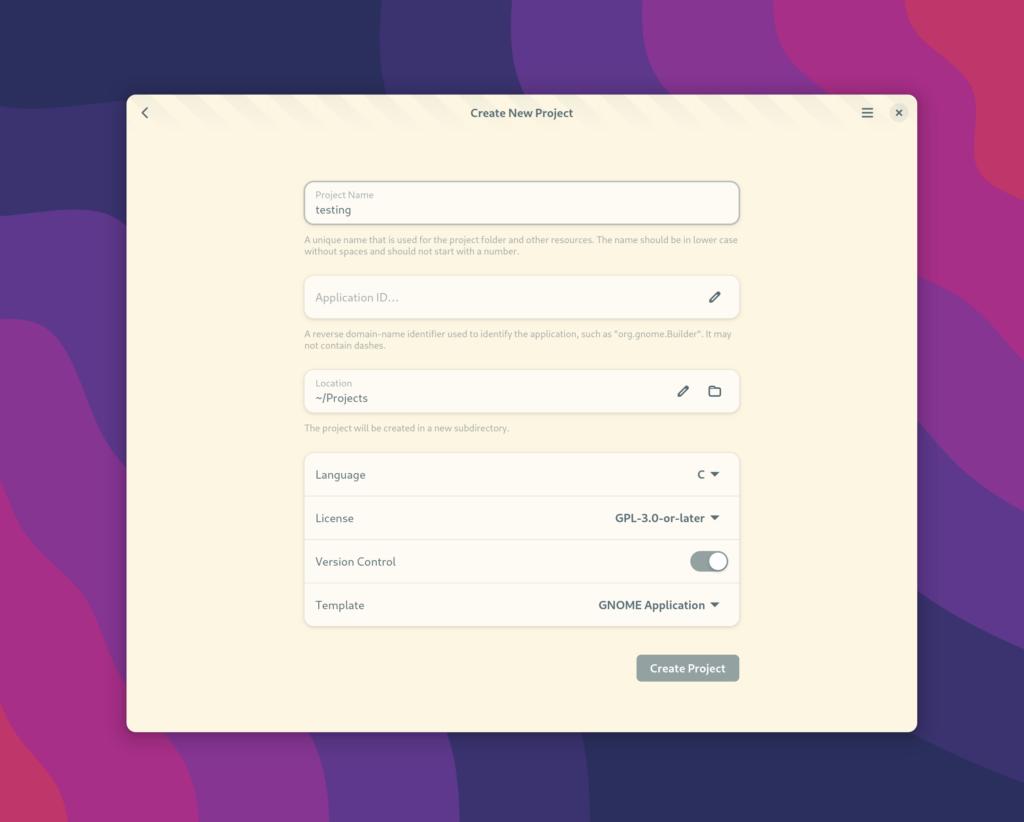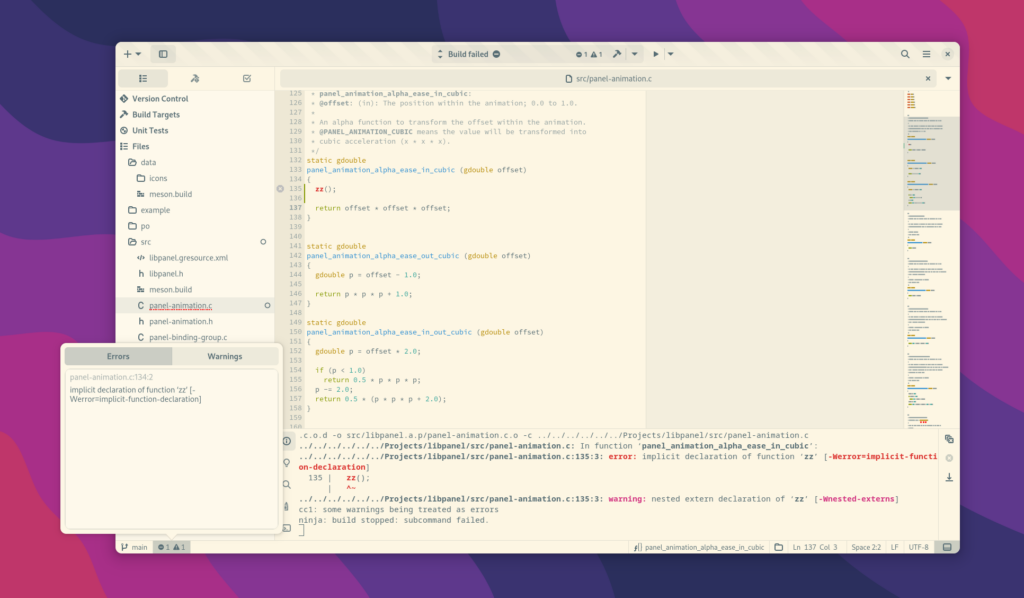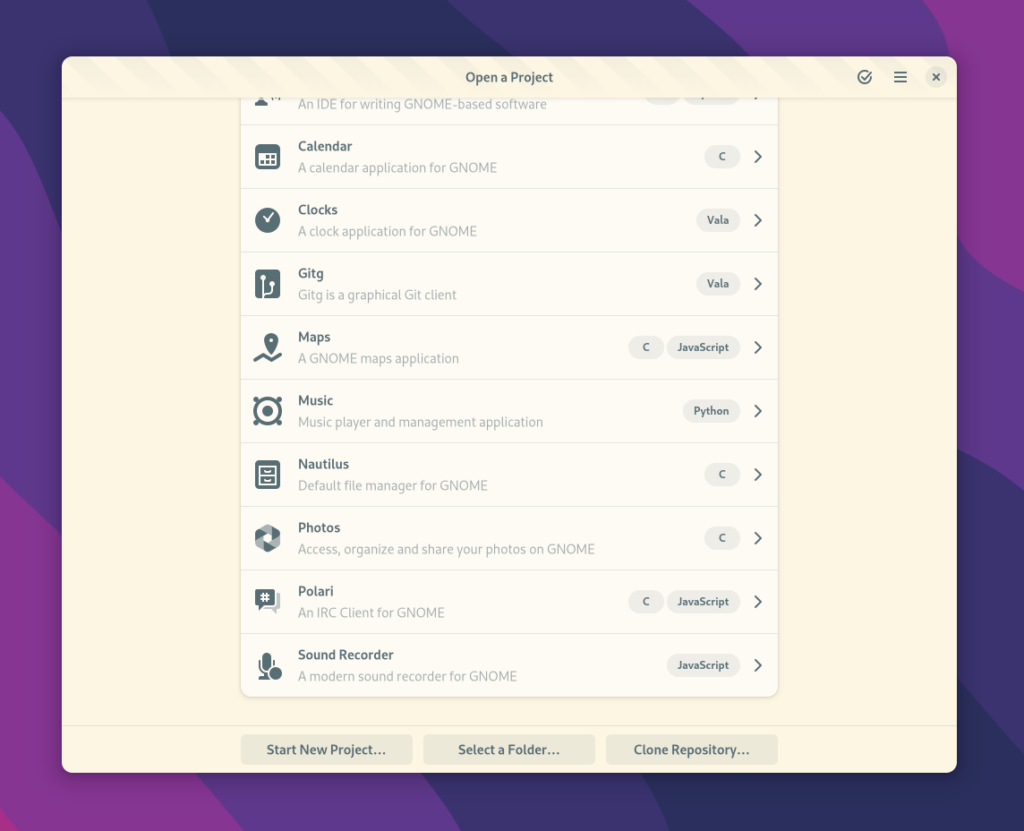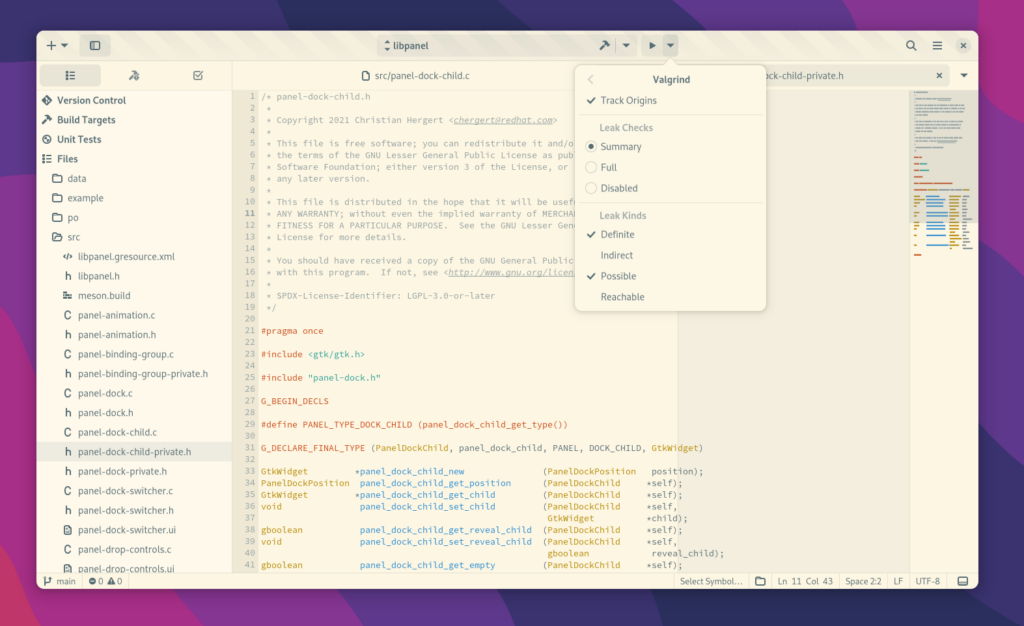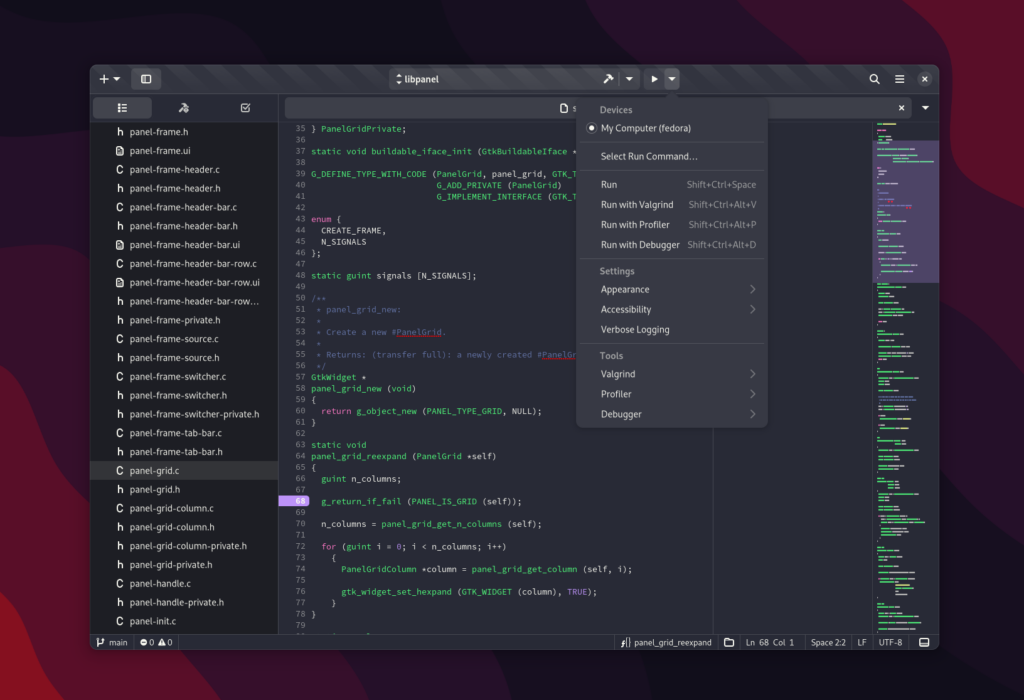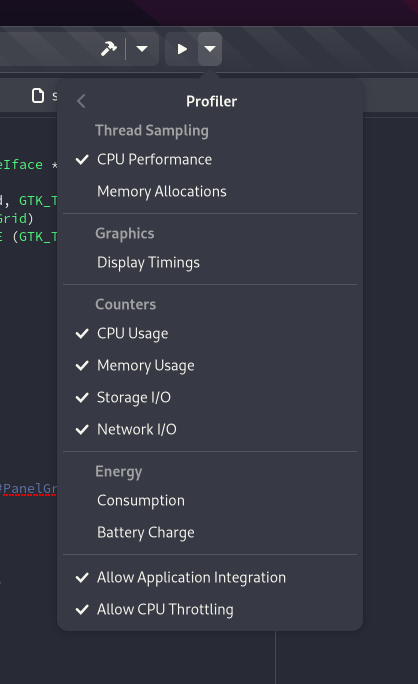Previously Part IV, Part III, Part II, and Part I.
Still working through medicine changes which have wreaked havoc on my sleep, but starting to settle in a bit more.
Template-GLib
Small changes here and there for template-glib to cover more cases for us in our keybindings effort. Improved type comparisons, fixed some embarrassing bugs, improved both GObject Introspection and GType method resolution.
Had some interesting talks with Benjamin about expression language needs within GTK and what things I’ve learned from Template-GLib that could be extracted/rewritten with a particular focus on continuously-evaluating-expressions.
Text Editor
I include gnome-text-editor in these updates because I tend to share code between Builder and g-t-e frequently.
- Improved session resiliency
- The Save-As dialog will now suggest filenames based on your current language syntax
- Tracked down some property orderings which ended up being a GTK bug, so fixed that too
- Persisted maximized window state to the session object on disk
- Support to inhibit logout while documents are modified
- Allow starting a single instance of the app with
-s|--standalonelike we do with Builder
GTK 4
- More API strawmen for things we need in Builder
- Fix some checkbutton annoyances
- Removed assertions from debug builds during failure cases, converted to g_criticals()
GtkSourceView
- Updated CI to use a newer Fedora release for more recent wayland protocols and what not
- More work on source assistants and how measure/present are applied to popovers
- Improved when and how we show informative tooltips with snippets
- Add a bunch of “suggested-name” and “suggested-suffix” metadata properties to language specifications so that applications may suggest filenames for Save-As
- Made Vim emulation of registers global to the application rather than per-view which makes things actually useful and expected behavior to share content between documents
- Squash some testsuite issues
Builder
Merged a bunch of cleanup commits from the community which is very helpful and appreciated!
I also decided that we’re going to remove all PyGObject plugins from Builder itself. We’ll still have it enabled for third-party plugins, at least for now. Maybe someday we’ll get a GJS back-end for libpeas and we could go that route instead. I’ve spent too much time tracking down bindings issues which made me feel very much like I was still working on MonoDevelop circa 2004. That experience was the whole reason I wrote Builder in C to begin with.
None of our PyGObject plugins are all that complicated so I’ve rewritten most of them in C and had help for a few others. So far that covers: blueprint, clangd, go-langserv (now gpls), intelephense, jedi-language-server, ts-language-server, vala-language-server, buildstream, cargo, copyright, eslint, find-other-file, jhbuild, make, mono, phpize, rstcheck, rubocop, stylelint, and waf.
A few got removed instead for various reasons. That includes gvls (replaced by vala-language-server), rls (replaced by rust-analyzer), and gjs-symbols (to be replaced by ts-language-server eventually).
I added support for two new language servers: bash-language-server and jdtls (Java) although we don’t have any bundling capabilities for them yet with regards to Flatpak.
I’ve landed a new “Create New Project” design which required a bunch of plumbing cleanup and simplification of how templates work. That will help me in porting the meson-templates and make-templates plugins to C too.
I’ve added quick access to Errors and Warnings in the statusbar so that we can remove it from the (largely hidden) pane within the left sidebar. Particularly I’d like to see someone contribute an addition to limit the list to the current file.
I updated the support for Sysprof so that it can integrate with Builder’s application runners and new workspace designs. You can how have Sysprof data in pages which provides a lot more flexibility. Long term I’d like to see us add API hooks in Sysprof so that we can jump from symbol names in the callgraphs to source code.
We cleaned up how symbolic icons are rendered in the greeter as well as how we show scroll state with a GtkScrolledWindow when you have a AdwHeaderBar.flat.
Our Valgrind plugin got more tweakables from the Run menu to help you do leak detection.
Keybindings for “Build and Run” along with various tooling got simplified to be more predictable. Also a lot of work on the menuing structure to be a bit simpler to follow.
You can force various a11y settings now to help get developers testing things they might otherwise never test.
Same goes for testing various libadwaita and libhandy settings. Both this and the RTL/LTR settings have a few things that still need to propagate through the stack, but it will happen soon enough.
Using Sysprof will be a lot easier to tweak going forward now that there are menu entries for a lot of the instruments.
A lot of new infrastructure is starting to land, but not really visible at the moment. Of note is the ability to separate build artifacts and runnables. This will give users a lot more control over what gets built by default and what gets run by default.
For example, a lot of people have asked for run support with better environment variable control. This should be trivial going forward. It also allows for us to do the same when it comes to tooling like “run this particular testsuite under valgrind”.
As always, freshest content tends to be found here 🐦 before I manage to find a spare moment to blog.
